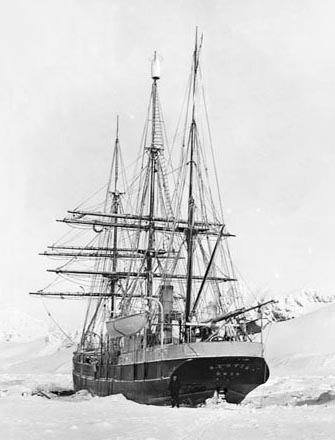And You Thought the Scotia Plate Was for Haggis!!Well, it appears there are more kinds of plates than the ones food is placed on – and this is one of them. It’s tectonic! (Not “Teutonic” – “Tectonic”). The world as we know it, is covered with great pieces of the earth’s crust which float on the layer below. Some of the plates are quite large while others are somewhat smaller. Among the largest is the Pacific plate which is about 103,300,000 km2. The plates are associated with earthquakes and volcanoes. The edges of the Pacific plate demarcate an area known as “The Ring of Fire” well known for such geological activity. Plates with an area of more than 20 million square kilometers are known as “major plates”; minor plates cover an area from 1 million square kilometers up to 20 million square kilometers. Smaller ones are sometimes referred to as “micro plates”.  Scotia Plate Among the minor tectonic plates is the Scotia Plate. This is a plate of about 1,600,000 square kilometers. Like Scotland, not too big, and not too small. It is nice to know there is a tectonic plate called “Scotia”. One might suspect to find it just off the coast of Scotland. But no! It is found just off the coast of South America – neatly squeezed in between the Antarctic Plate and the South American Plate! It’s not even in the Northern Hemisphere! So what is a Scotia Plate doing here? Well, it seems that it is only indirectly related to Scotia, the country. It seems that between 1902 and 1904 the Scottish National Antarctic Expedition was off studying the Antarctic. The expedition had been organized by William Spiers Bruce, a natural scientist who had been a student in medicine at the University of Edinburgh. Bruce had been traveling to the Antarctic for more than a decade and was the most experienced polar scientist in Britain at the time. The expedition was a success in that it set up the first manned meteorological station in the area, and collected a large number of biological and geological samples which led to the establishment of the Scottish Oceanographical Laboratory in 1906. It survived until 1919 when lack of funding and Bruce’s declining health forced it to close. The contents of the Laboratory were turned over to University of Edinburgh, the Royal Scottish Geographical Society and the Royal Scottish Museum. Popular interest in Antarctica shifted to more “dramatic” events such as those of Amundsen and Shackleton with the result that Bruce and the other members of the expedition were no grant the prestigious “Polar Medal”. The expedition was carried out in barque - a Norwegian ship that had been originally built as a whaling vessel and named the Hekla. Bruce purchased it in 1902 for the expedition and renamed it Scotia. It was fitted out with steam engine and strengthened. Although it was thought the ship would remain a research vessel, the Scotia was auctioned off to recoup some of the costs of the expedition. Used for a while as a ship to watch for icebergs after the sinking of the Titanic, the ship finally burned in 1916. The first measurements of the ocean floor (known as bathymetric studies) in the area where the Scotia Plate is found were made from the Scotia during the expedition. In honor of the vessel, the plate was named the Scotia plate. So, Scotia refers not only to Scotland (above the ocean) in the northern hemisphere, but to a tectonic plate below the ocean in the southern hemisphere. So Scotia can be found above and below the equator and above and below the ocean.
43rd Annual Scottish Heritage Service in New Canaan, CTOn the morning of May 1st the skies were gray and the rain was falling gently in New Canaan Connecticut. It could have been Scotland. It was the day that the Scottish community in that city celebrates “Scottish Sunday” at the First Presbyterian Church.  The church with the American and British flags along with the Saltire and Rampant Lion  This year marks the 43rd Annual Scottish Sunday. Kilt clad ushers directed people to the areas where the various events would take place. There would be a church service and performances of Scottish music and dance. There would be food for one and all, and of course the obligatory haggis 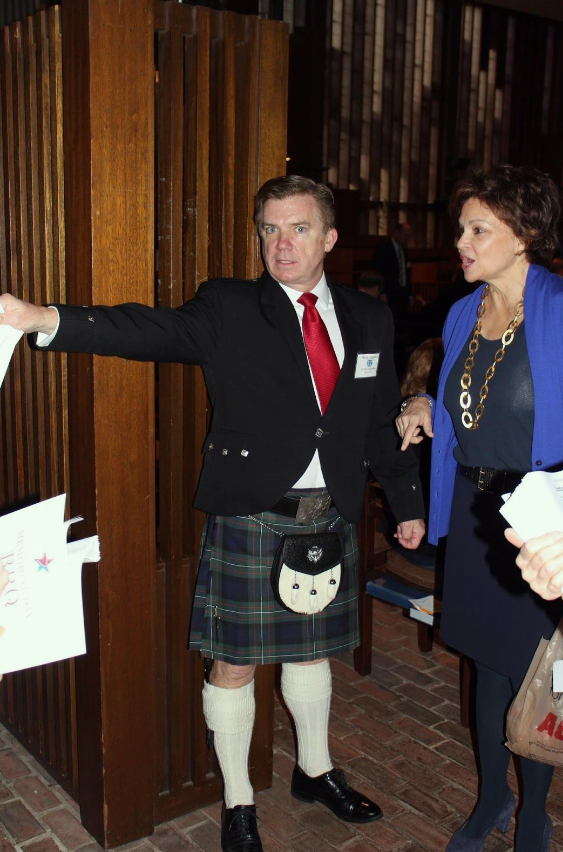 The celebration began with the Mt. Kisco Pipe Band performing before the service started. 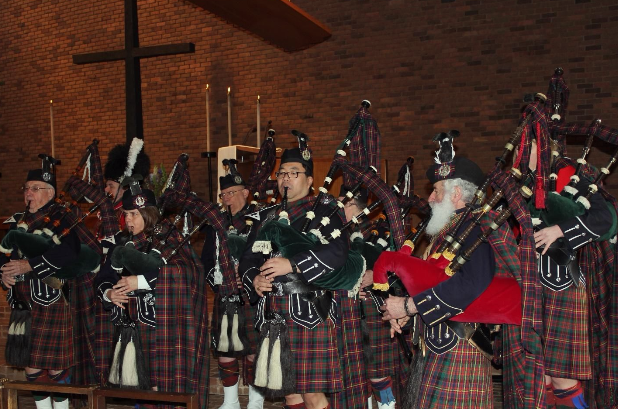 The Mout Kisco Pipes and Drums open the ceremonies 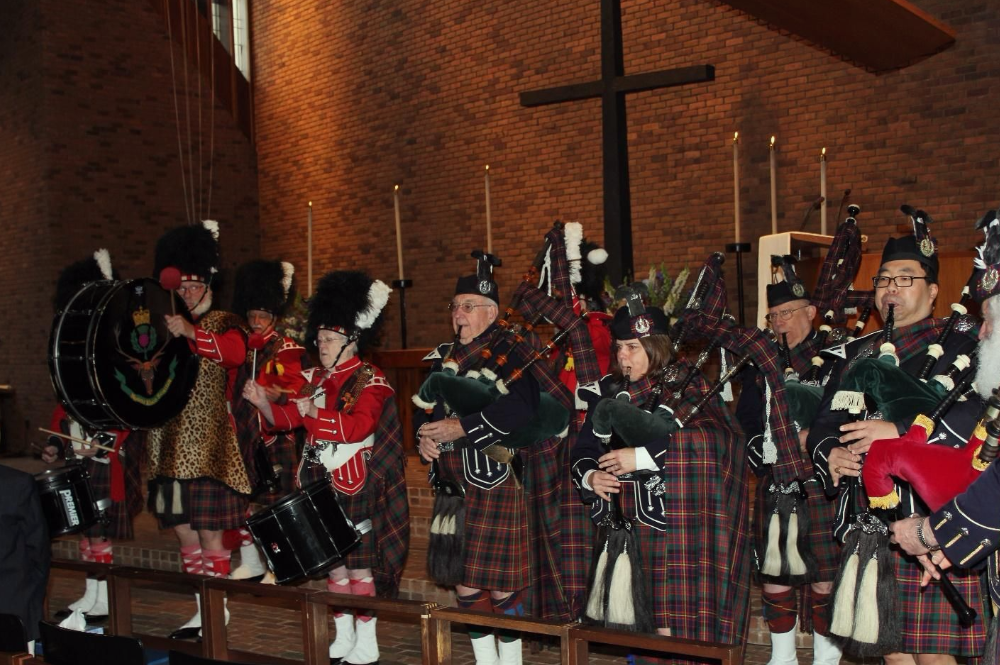 The Mount Kisco Pipes and Drums performing at the event The incomparable Ron Duncan sang several songs including “Flower of Scotland” and the “Skye Boat Song” 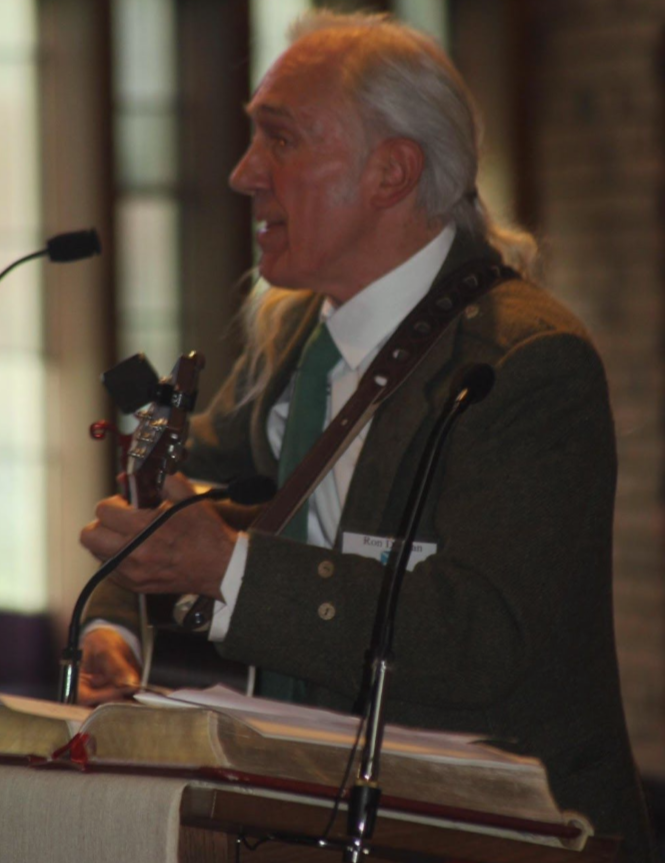 Ron Duncan 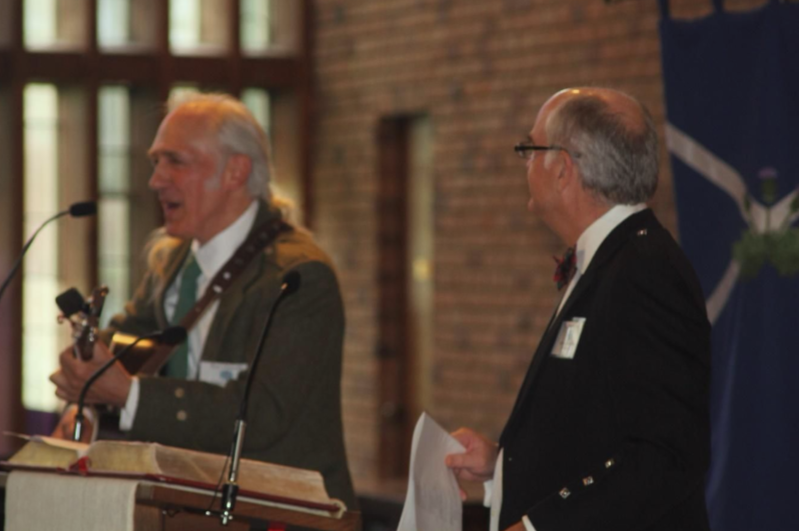 Some of the younger children brought in swatches of the various tartans which were blessed as a symbolic way of blessing the families the tartans represent. 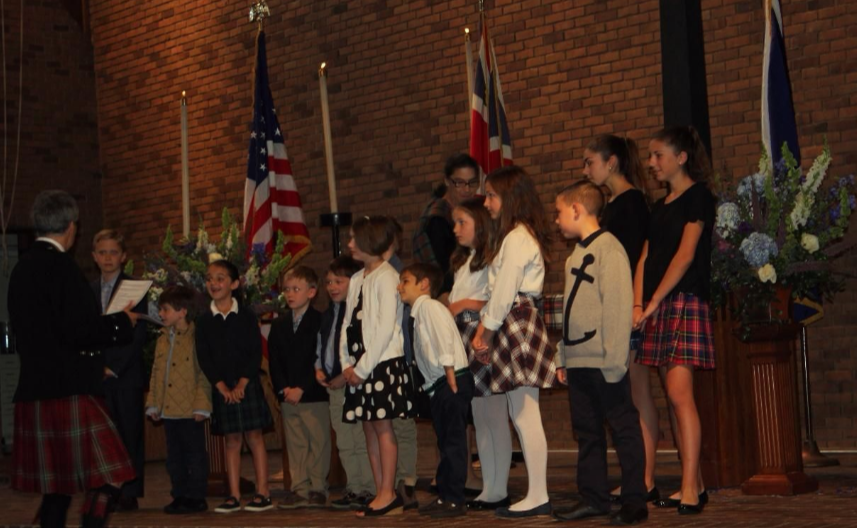 Rev. Paul E. Gilmore addresss the children who brought the swatches for the “kirkin’ o’ the tartans” Each year some of the middle and high school youth are going to Iona, the small Island off the island pf Mull. Iona was center for Gaelic monasticism for many centuries and is now a place for retreats and tranquility. It is also known to be the place where St. Columba arrived bringing Christianity and also was the place where many Scottish kings were said to be buried. When the young travelers return they will hold a dinner and have a slide show presentation about their trip. 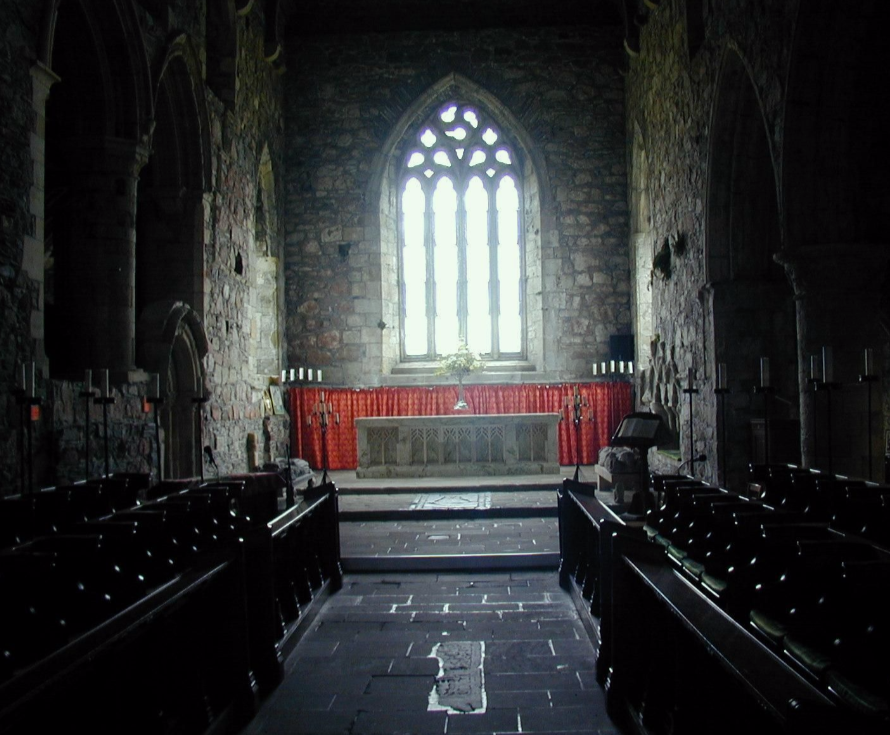 The Chapel at Iona Following the church service, a number of people performed songs and dances and played tunes on the pipes. Here a young lady dances the Lilt. 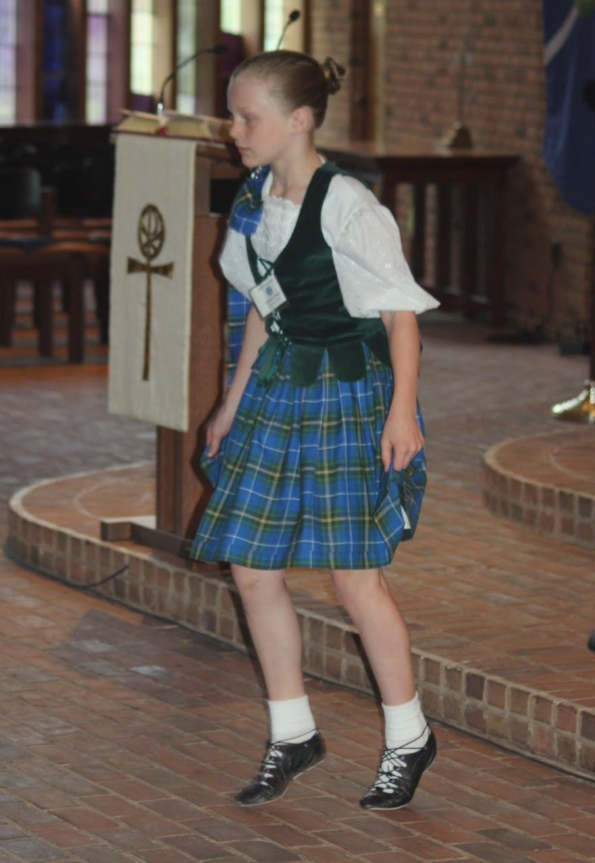 Thomas Leigh from the Callanish School of Celtic Arts played a number of pieces including a wonderful jig set. He also accompanied the young girls who performed the highland dances. 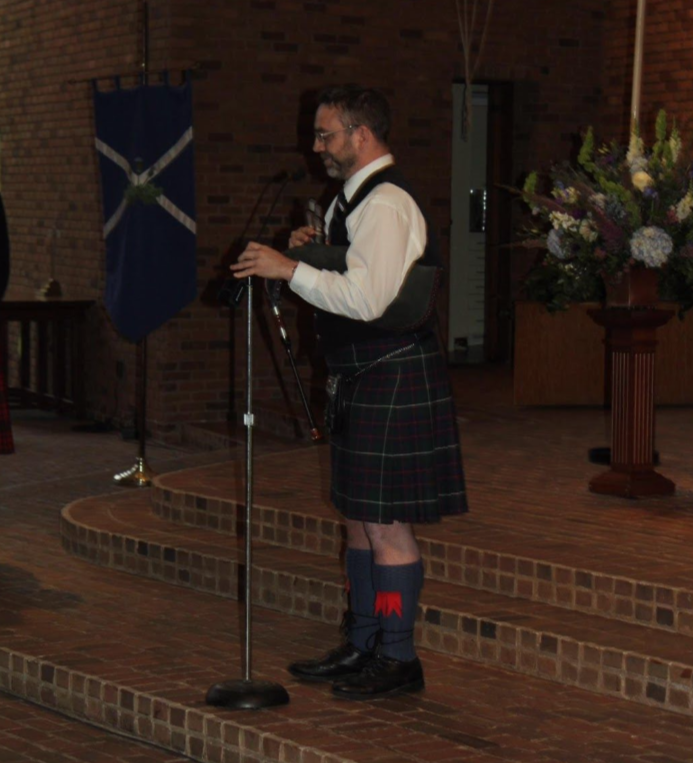 Thomas Leigh performs on the Scottish small pipes. Later, in the program, another young lady performed the Sword Dance 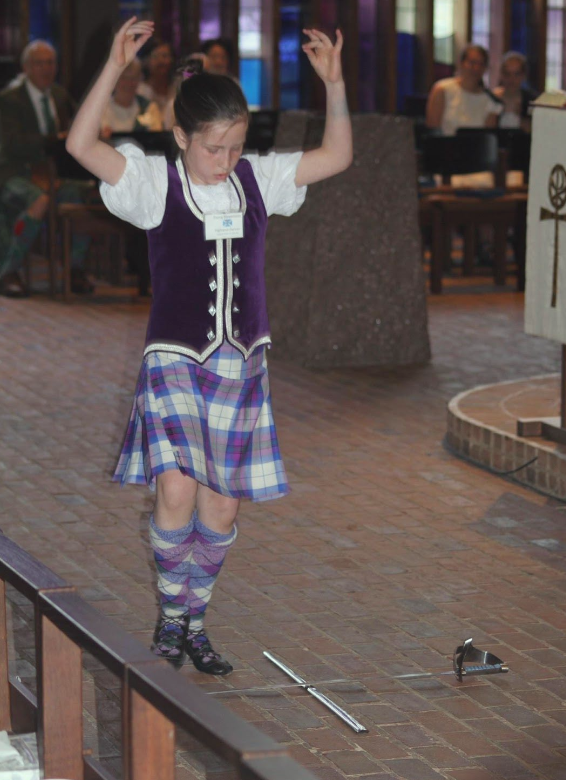 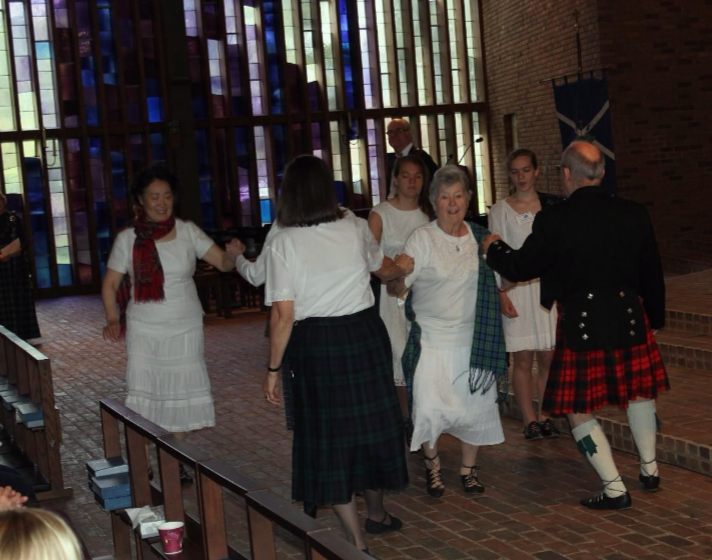 Members of the Royal Scottish Country Dance Society/Wilton County Dancers performed a number of country dances. It felt more as though they were just enjoying themselves rather than a “performance”. It made the whole event warm and friendly. The audience enjoyed every minute. Later there was plenty of great food served in another part of the building.  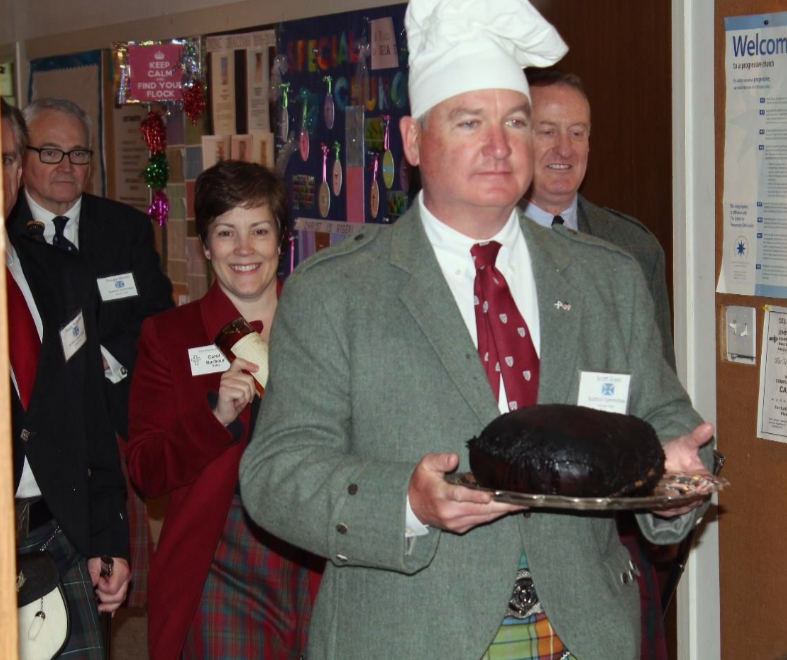 The chef approaches with the haggis 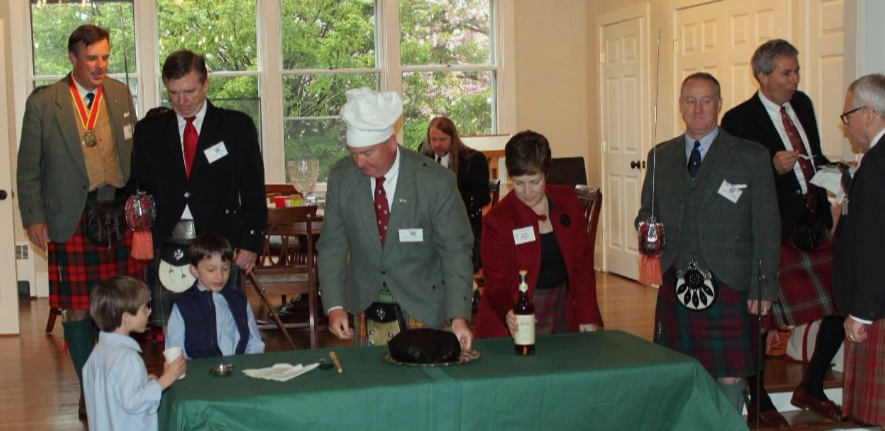 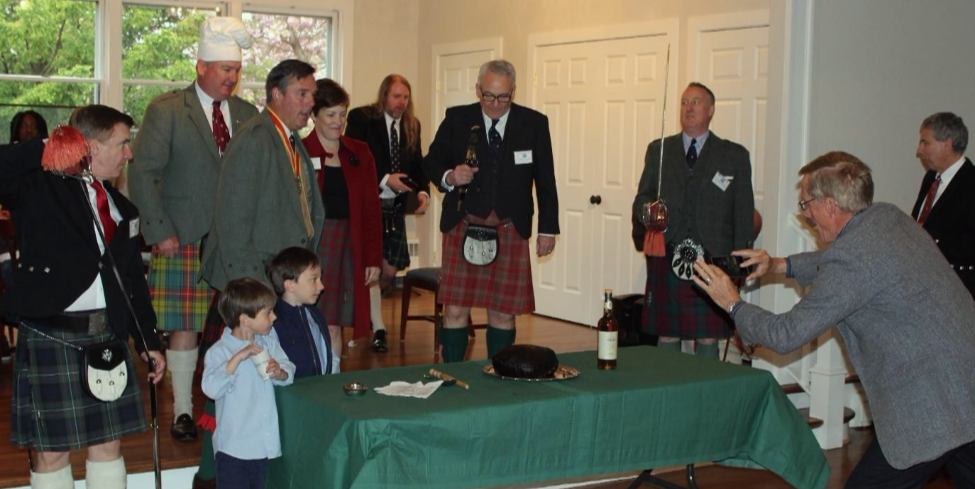 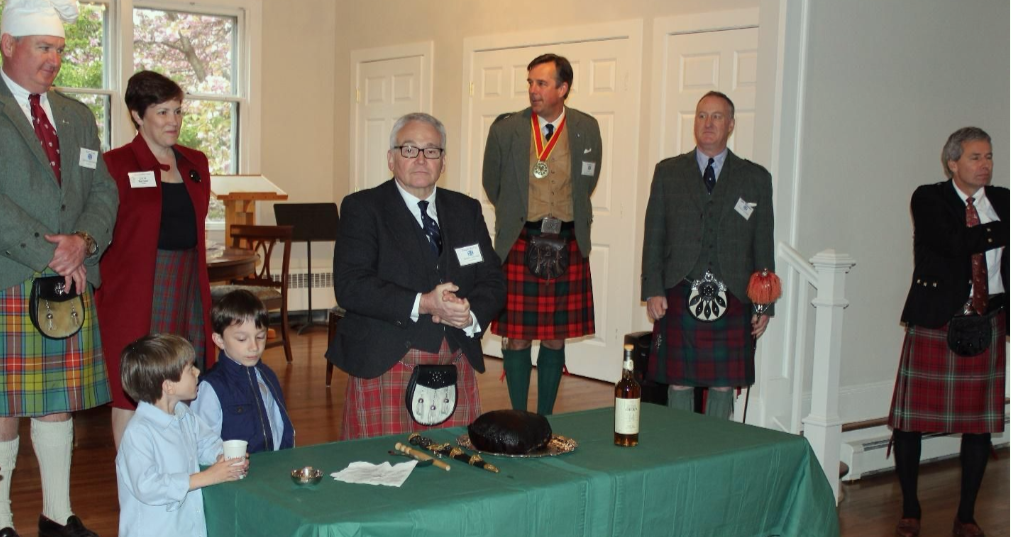 The haggis is about to be addressed – and a great address it was! 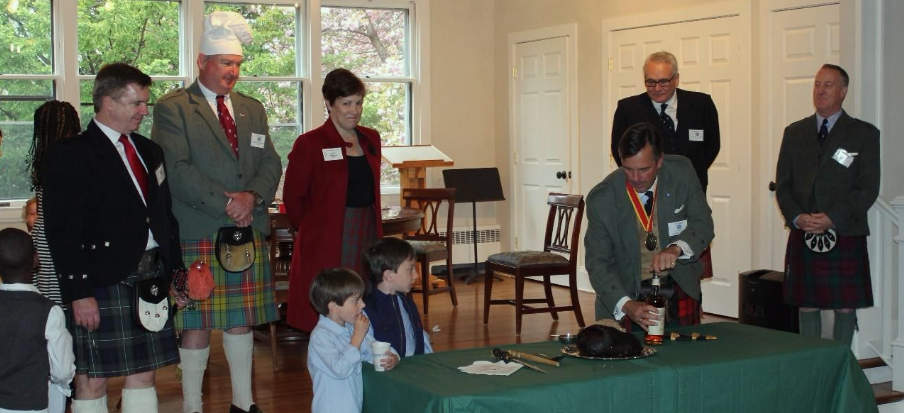 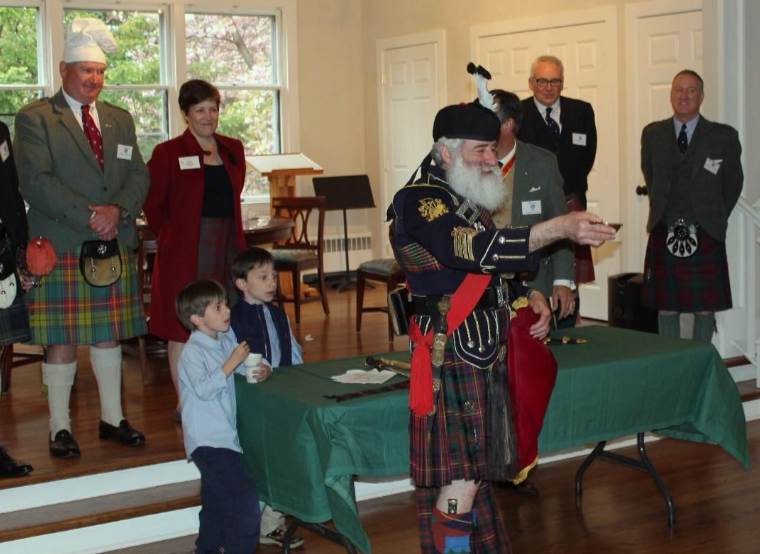 The piper who piped in the haggis gets a “wee dram” for his efforts. 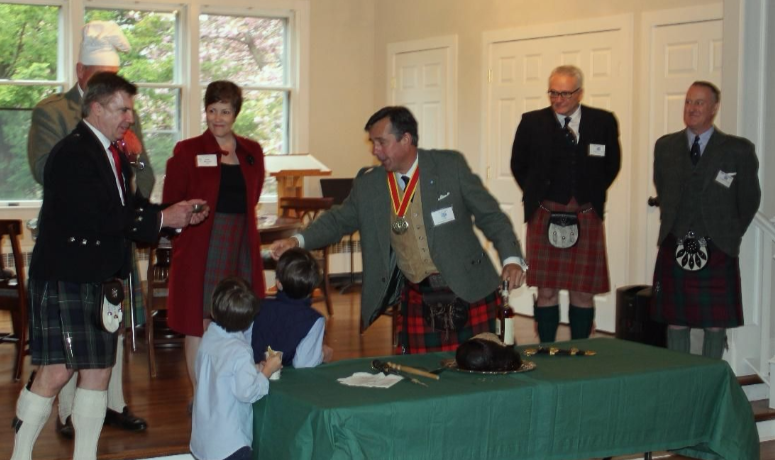 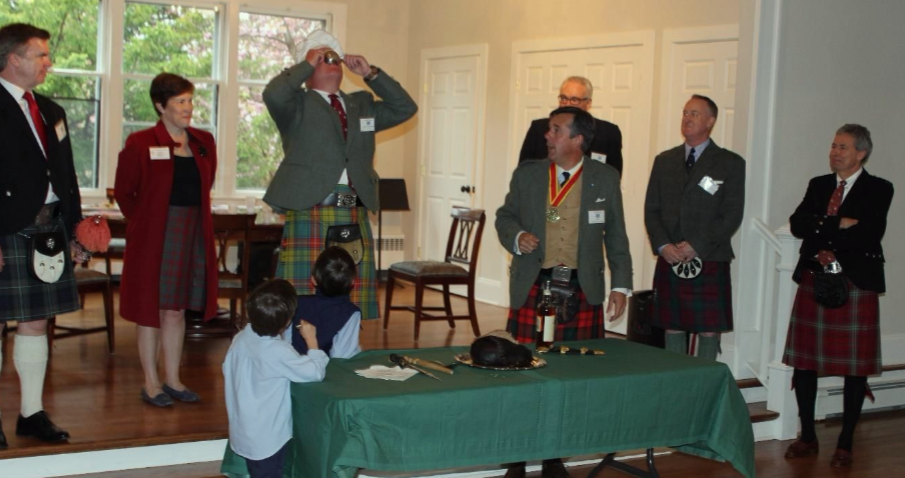 A small libation for the chef! |
